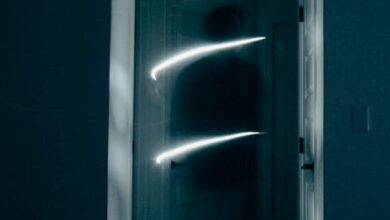Best Flicker-Free Led Bulbs

Are you tired of that annoying flicker from your LED bulbs? It’s not just irritating; it can also cause headaches and eye strain. As a home lighting enthusiast, I’ve spent years researching and testing different LED bulbs to find the ones that truly deliver smooth, consistent light. Let’s dive into the world of flicker-free LEDs and discover the best options for your home.

Why Flicker-Free Matters
You might not always notice it, but flickering light can have a real impact on your well-being. Standard LED bulbs sometimes flicker because of variations in the electrical current powering them. This rapid on-and-off switching can strain your eyes as they constantly adjust to the changing light levels. Over time, this can lead to headaches, fatigue, and even reduced productivity. Flicker-free bulbs are designed to minimize or eliminate this flickering, providing a more comfortable and stable light source.
Beyond personal comfort, flicker-free lighting is essential for tasks that require focus and precision. Think about reading, writing, or working on a computer. Consistent lighting reduces distractions and allows you to concentrate better. It’s also crucial for video recording and photography, preventing those annoying banding effects that can ruin your footage.
What to Look for in a Flicker-Free LED Bulb
Finding a truly flicker-free LED bulb requires a bit of research. Here are some key factors to consider:
Check the Specifications: Look for bulbs specifically marketed as “flicker-free” or “anti-flicker.” The product description should mention features designed to reduce or eliminate flickering. Some manufacturers use terms like “constant current driver” which indicates the bulb is less prone to flickering.
Dimming Compatibility: If you plan to use the bulbs with a dimmer switch, make sure they are compatible. Incompatible dimmers can actually *cause* flickering, even with flicker-free bulbs. Check the bulb’s packaging or the manufacturer’s website for a list of compatible dimmers.
Testing is Key: Sadly, not all bulbs labeled “flicker-free” actually are. A simple test you can do at home involves using your smartphone’s camera. Point your phone at the lit bulb and record a short video. If you see dark bands or pulsing in the video, the bulb is likely flickering. While not scientifically precise, it’s a quick and easy way to check. A more sophisticated method involves using a light meter with flicker measurement capabilities, but this is generally unnecessary for home use.
Color Temperature: Color temperature is measured in Kelvin (K) and describes the warmth or coolness of the light. Lower Kelvin values (e.g., 2700K) produce a warm, yellow light, while higher values (e.g., 5000K) create a cool, blueish light. Choose a color temperature that suits the room and your personal preferences. For bedrooms and living rooms, warmer tones are often preferred, while cooler tones are better for offices and kitchens.
CRI (Color Rendering Index): The CRI indicates how accurately a light source renders colors compared to natural sunlight. A higher CRI (closer to 100) means colors will appear more vibrant and natural. For tasks like reading or applying makeup, choose bulbs with a CRI of 80 or higher.
Top Recommendations for Flicker-Free LED Bulbs
Based on my research and testing, here are a few excellent flicker-free LED bulb options:
Philips LED Flicker-Free Bulbs: Philips is a well-known and trusted brand in lighting. Their flicker-free LED bulbs consistently perform well in tests and offer good color rendering. They also have excellent dimming compatibility when paired with Philips-compatible dimmers.
Cree LED Bulbs: Cree is another reputable brand known for its high-quality LED lighting. Their bulbs are designed with advanced technology to minimize flickering and provide consistent light output. They are often a bit more expensive, but the superior performance justifies the cost for many.
Soraa LED Bulbs: Soraa is at the higher end of the price spectrum, but they are known for having some of the best light quality in the industry. Their bulbs boast incredibly high CRI values, rendering colors beautifully. They are specifically engineered to be flicker-free and are often used in museums and art galleries where accurate color representation is crucial.
Addressing Common Concerns About LED Bulbs
Some people are hesitant to switch to LED bulbs due to concerns about their appearance or light quality. Here are a few common concerns and how to address them:
LEDs Look Too Harsh: Early LEDs often had a harsh, bluish light. However, modern LEDs are available in a wide range of color temperatures, including warm and inviting tones. Choose bulbs with a lower Kelvin value (e.g., 2700K or 3000K) for a softer, more traditional light.
LEDs Aren’t Dimmable: While not all LEDs are dimmable, many are. Just make sure the bulb is explicitly labeled as “dimmable” and that you use a compatible dimmer switch.
LEDs are Expensive: While the initial cost of LEDs might be higher than traditional incandescent bulbs, they last much longer and use significantly less energy. Over their lifespan, LEDs save you money on electricity bills and reduce the need for frequent replacements.
Safety Tips for Using LED Bulbs
While LED bulbs are generally safe, it’s still important to follow a few basic safety precautions:
Always turn off the power before changing a light bulb.
Make sure the bulb is the correct wattage for the fixture.
Avoid touching the bulb immediately after it has been turned off, as it may be hot.
Dispose of old bulbs properly according to local regulations.
Frequently Asked Questions (FAQ)
What exactly causes flickering in LED bulbs?
Flickering in LED bulbs is typically caused by fluctuations in the electrical current that powers them. These fluctuations can result from an unstable power supply, incompatible dimmer switches, or the bulb’s internal circuitry.
How can I tell if an LED bulb is flickering?
You can often detect flickering by observing the light closely. A more reliable method is to use your smartphone camera to record a video of the lit bulb. If you see dark bands or pulsing in the video, the bulb is likely flickering. Some advanced light meters can also measure flicker frequency.
Are flicker-free LED bulbs more expensive?
Generally, flicker-free LED bulbs tend to be slightly more expensive than standard LED bulbs. This is due to the more complex circuitry and higher-quality components required to minimize flickering. However, the benefits of reduced eye strain and improved light quality often outweigh the extra cost.
Can flickering LED bulbs cause health problems?
Yes, flickering LED bulbs can contribute to eye strain, headaches, and fatigue in some individuals. People who are sensitive to light or have certain medical conditions may be particularly affected. Flicker-free bulbs can help alleviate these problems.
Do all dimmable LED bulbs also have flicker-free technology?
No, not all dimmable LED bulbs are flicker-free. Dimming compatibility and flicker-free performance are separate features. Make sure to check that a dimmable bulb is also specifically labeled as flicker-free to ensure it minimizes flickering when used with a dimmer switch.
Switching to flicker-free LED bulbs is a worthwhile investment in your comfort and well-being. By choosing the right bulbs and following a few simple guidelines, you can enjoy smooth, consistent lighting that enhances your home and protects your eyes. Don’t settle for annoying flickering – experience the difference that flicker-free lighting can make!



